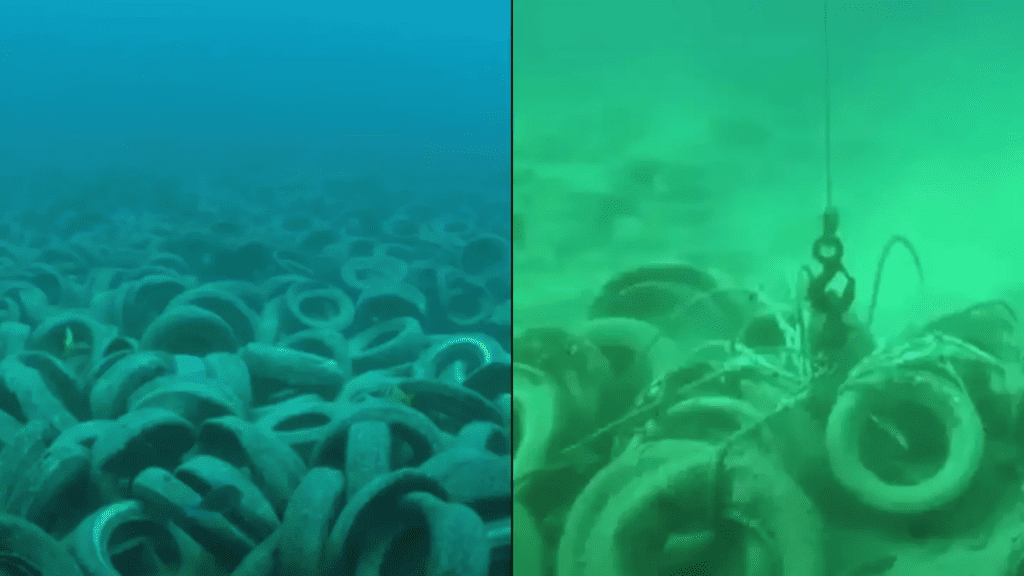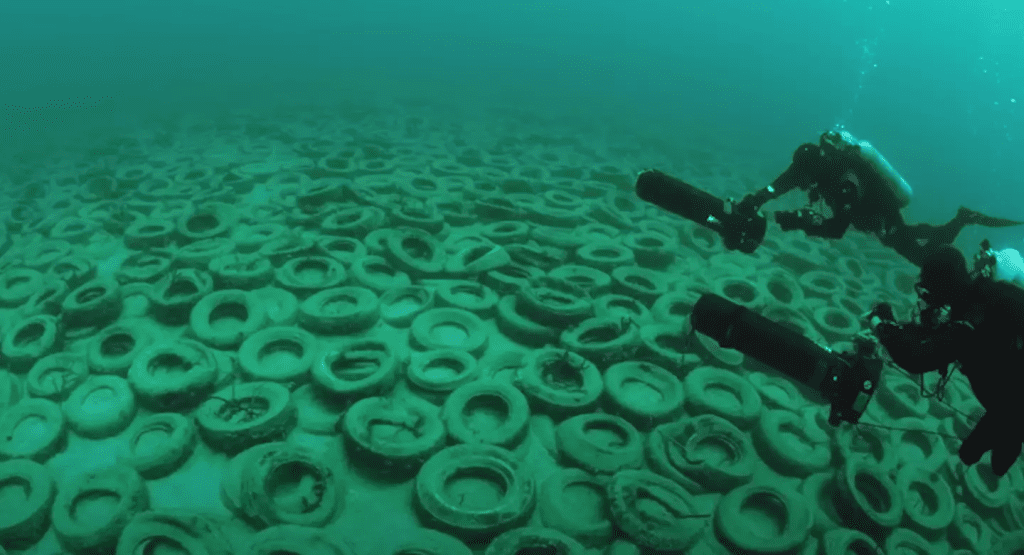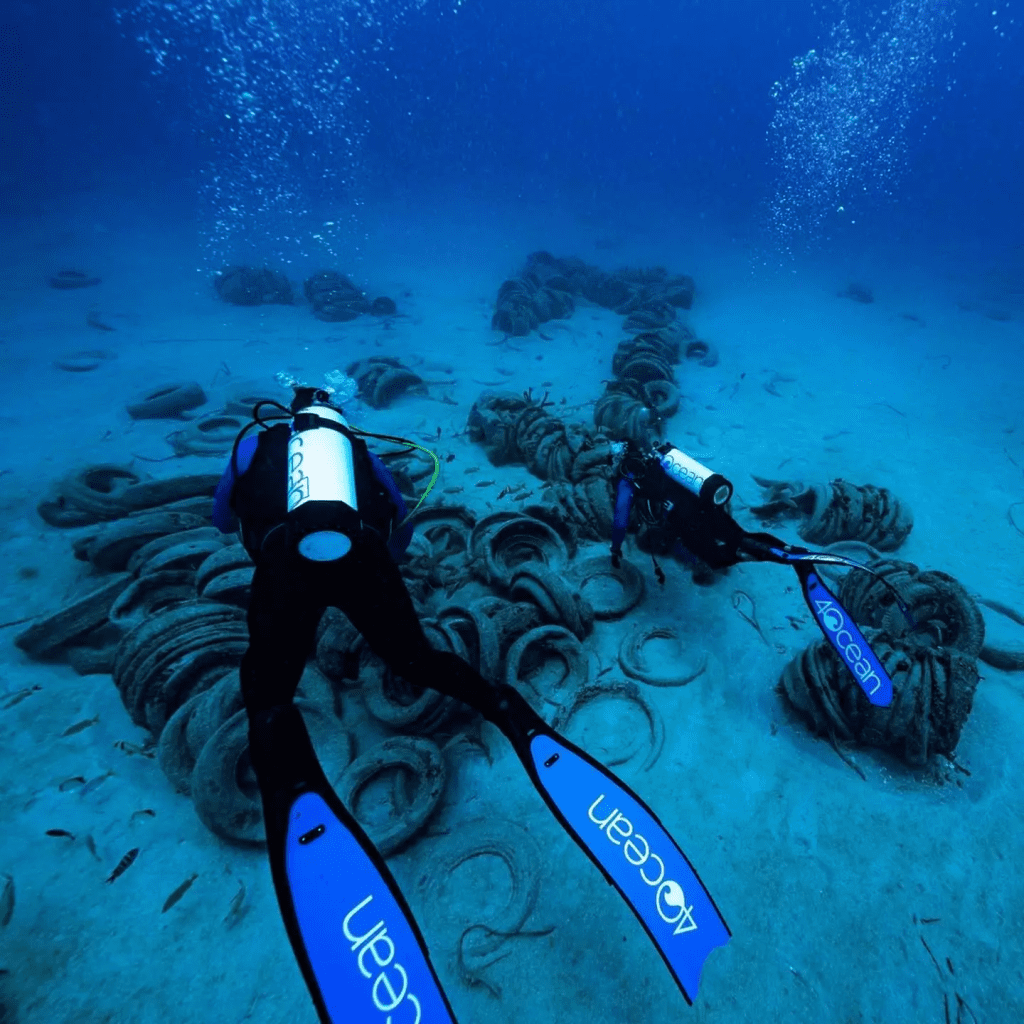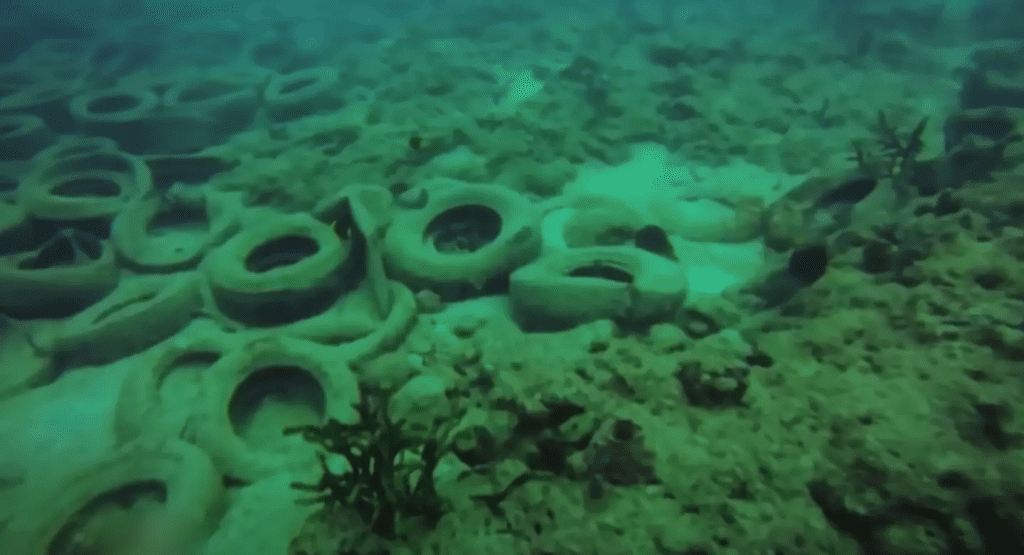More than five decades ago, an ambitious project off the coast of Fort Lauderdale, Florida, aimed to improve marine habitats with an artificial reef made of two million tires. Known as Osborne Reef, this initiative was meant to mimic coral reefs and provide a haven for marine life. Today, the project stands as a cautionary tale, with devastating environmental consequences that are still being addressed. Let’s dive into the eerie story of Osborne Reef, its impacts, and the ongoing efforts to clean up this underwater catastrophe.

How Did Osborne Reef Begin? A Misguided Idea for Marine Conservation
In the 1970s, the idea of Osborne Reef was born from a nonprofit initiative, backed by the US Army Corps of Engineers and supported by the US Navy. The concept seemed promising: dispose of old tires by repurposing them into an artificial reef to bolster marine ecosystems.
The tire industry, including companies like Goodyear, embraced the project. Goodyear even added a symbolic touch by dropping a gold-plated tire into the reef from their iconic blimp. What could go wrong? Unfortunately, almost everything.
The tires were bound together with nylon ropes and steel clips—materials that weren’t durable enough to withstand the ocean’s forces. Over time, the bindings failed, scattering the tires across the seabed and beyond. Instead of creating a thriving marine habitat, the tires caused severe damage to existing coral reefs and disrupted ecosystems.

Why Did Osborne Reef Fail? Lessons in Environmental Mismanagement
The failure of Osborne Reef underscores the consequences of poor planning and a lack of foresight in environmental projects. The tires didn’t provide the stable substrate needed for coral and marine organisms to thrive.
Instead, the tires became mobile hazards, dislodged by ocean currents and storms. These drifting tires damaged natural coral formations and introduced non-biodegradable debris into sensitive marine environments.
The materials used to secure the tires were another major oversight. Nylon ropes and steel clips couldn’t endure the salty, corrosive conditions of the ocean, leading to the tires breaking free and dispersing over vast areas.
The Current State of Osborne Reef
Today, Osborne Reef remains a stark reminder of how well-intentioned ideas can backfire without proper research and execution. While efforts to address the problem began decades ago, progress has been slow.
Organizations like 4ocean and the Florida Department of Environmental Protection (DEP) have been actively working to clean up the site. 4ocean, a company dedicated to removing ocean plastic and debris, joined the cleanup efforts and has documented the ongoing struggle on social media.
In March 2022, 4ocean reported that while significant progress had been made, more than 500,000 tires were still scattered across the ocean floor. However, some estimates suggest the number might be closer to one million, painting a daunting picture of the work that remains.

How Long Will It Take to Clean Up Osborne Reef?
The timeline for fully cleaning up Osborne Reef is uncertain. The Florida DEP has been monitoring the situation and leading removal projects under the Osborne Reef Waste Tire Removal Project.
The most recent updates indicate that hundreds of thousands of tires have already been removed, but it may take another decade or more to clear the remaining debris. A report submitted to the Florida Senate in 2024 included estimates and cleanup plans, but much of the timeline remains unknown to the public.
Estimates suggest that by 2033, nearly one million tires will have been removed. However, this depends on sustained funding, manpower, and technological advancements in underwater cleanup methods.
Environmental and Economic Costs of Osborne Reef
The environmental cost of Osborne Reef is staggering. Coral reefs are already under threat from climate change, pollution, and overfishing, and projects like this exacerbate the problem.
The tires not only failed to support marine life but also disrupted existing ecosystems. Their presence hinders coral regrowth, damages habitats, and introduces long-lasting waste into the ocean.
The financial cost is equally concerning. Cleanup efforts have required significant resources, including assistance from the US military and private organizations. Removing each tire is a labor-intensive process, with divers and specialized equipment needed to retrieve and dispose of the debris responsibly.

What Can We Learn from Osborne Reef?
The Osborne Reef disaster highlights the importance of rigorous research and long-term planning in environmental projects. It serves as a powerful reminder that well-intentioned solutions can have unintended consequences if not executed with care and precision.
Key lessons include:
- Durability Matters: Materials used in environmental projects must be capable of withstanding natural forces over extended periods.
- Ecosystem Impact Assessments: Thorough studies are essential to predict how artificial structures will interact with existing ecosystems.
- Accountability: Organizations involved in such projects must take responsibility for their outcomes and contribute to mitigating any negative effects.
The Road Ahead: Hope for Osborne Reef
While the damage caused by Osborne Reef is undeniable, the efforts to rectify the situation offer a glimmer of hope. Groups like 4ocean and the Florida DEP are working tirelessly to remove the tires and restore the ocean floor to its natural state.
This uphill battle also serves as an opportunity to raise awareness about environmental conservation and the importance of sustainable practices. As technology advances, more efficient methods for ocean cleanup may emerge, accelerating the progress at Osborne Reef and other damaged ecosystems worldwide.
Conclusion
The story of Osborne Reef is both a cautionary tale and a call to action. It reminds us that even the best intentions can lead to disastrous outcomes without careful planning and execution. While the cleanup efforts continue, Osborne Reef stands as a symbol of the importance of sustainable environmental practices and the need for accountability in ecological projects.
With ongoing dedication and innovation, there is hope that the ocean can heal from this decades-old experiment gone wrong. As we look to the future, let Osborne Reef serve as a lesson in the power—and the consequences—of human intervention in nature.